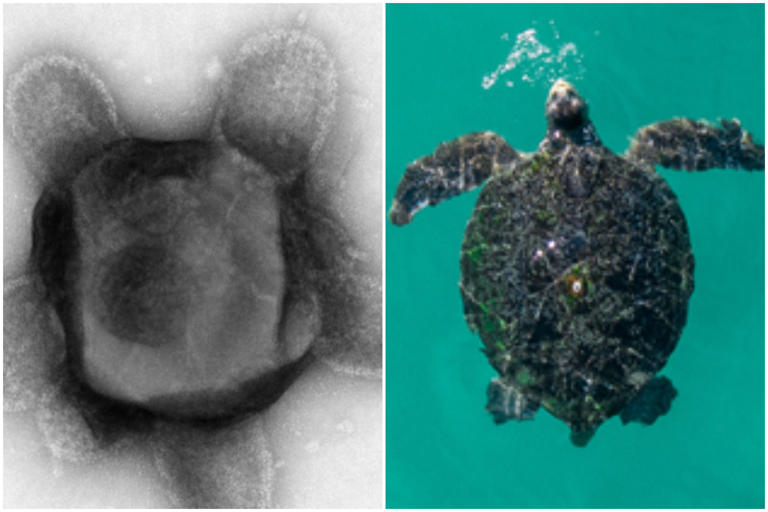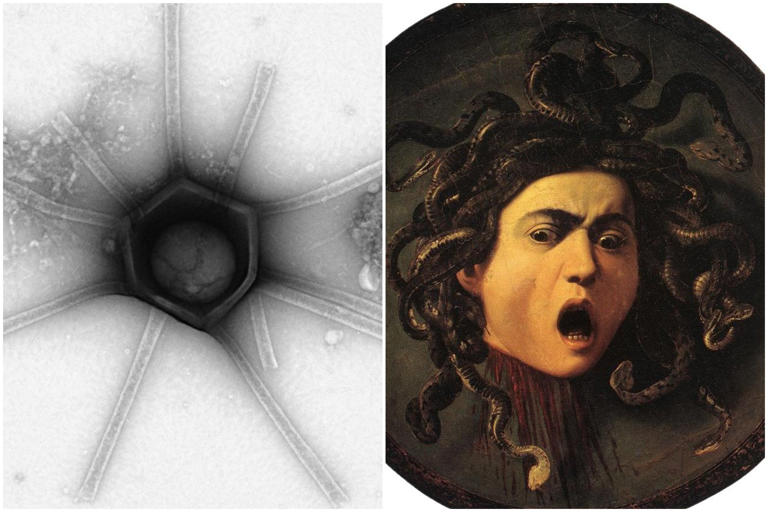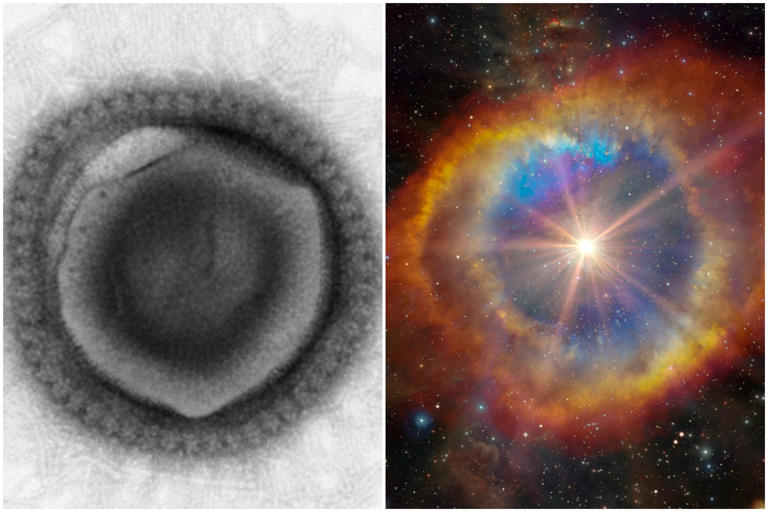

Giant alien-like virus
Recently, a group of scientists made a remarkable discovery of a new series of giant virus-like particles (VLP) that display unprecedented shapes and forms. These tiny organisms, resembling everything from stars to monsters, were found in just a few handfuls of forest soil. The samples were collected from Harvard Forest near Boston in 2019 and transported to Germany’s Max Planck Institute for evaluation.
The team of researchers, led by Dr. Matthias Fischer, expressed that their findings challenge our current understanding of the virosphere. They suggest that giant viruses use a wider array of structures and mechanisms to interact with host cells than we presently know. Thus, our knowledge of the universe of viruses here on Earth is still restricted.
Furthermore, the origins and functions of the various viral structures discovered remain unknown, leaving plenty of mystery to unravel. To their surprise, the team discovered an astonishing variety of virus-like particles in the small forest soil sample. In reality, a few hundred grams contained more diverse structures than all the previously isolated giant viruses combined. Remarkably, one of the structures appeared to be a supernova.
These discoveries not only underscore the significance of not underestimating viruses but also highlight the need for further exploration and investigation in this field. Our understanding of viruses is far from complete, and there is much more to discover.
The team also referred to it as “haircut”.”.
Another morphotype is referred to as the “turtle”.

Another named the “Christmas star”:

There is also another one named the “Gorgon,” which was named after the sisters in Greek mythology known for having hair made of snakes.

Virus-like particles (VLPs) have many similarities to viruses, but one crucial difference is that they cannot cause infections. This is because VLPs lack the genetic material that viruses possess. However, these particles still play a crucial role in understanding how viruses interact with their host systems. In a recent study, researchers found that giant viruses use various structures and mechanisms to interact with their host cells, which exceeds current knowledge. The authors concluded their paper by stating that this discovery provides a fascinating insight into the intricate world of soil viruses. They also noted that the diverse genetic makeup of giant viruses is accompanied by an array of previously unknown particle structures, which require further investigation. Undoubtedly, there is still a vast amount of work to be done in this field.






 The Ultimate Reading- Just $26!
The Ultimate Reading- Just $26! 
